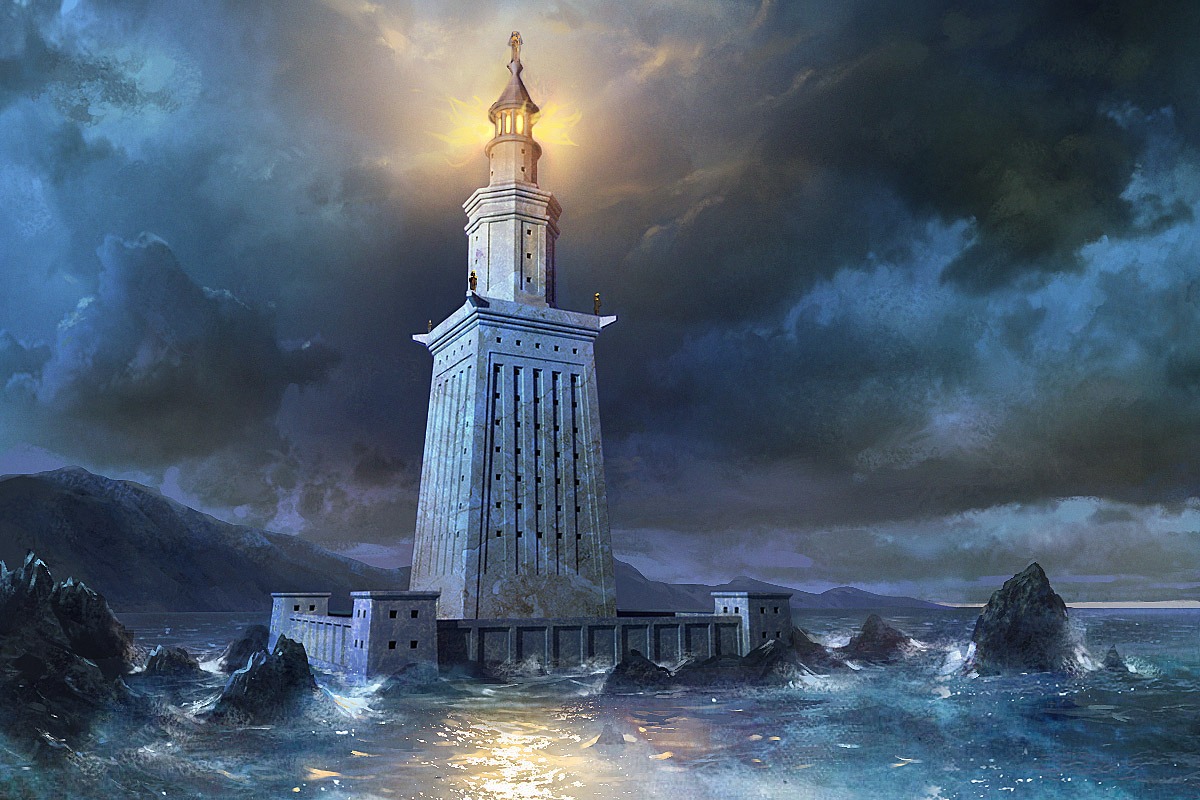
Guarding the coast, bathed in sun-scarring and salt, stood one of Egypt’s most daunting structures: the Pharos of Alexandria, the third tallest human-made structure of its time and a blueprint for what would later be considered the modern lighthouse. For centuries, this lighthouse was the hallmark of ingenuity, rising just short of the Great Pyramid and hailed as one of the Seven Wonders of the Ancient World.
Stationed on the Eastern Cape of Pharos, a humble isle off the coast of Egypt linked to the mainland by means of a dike, the lighthouse became a fixture of the Alexandrian coastline. It overlooked some of the Mediterranean’s most turbulent waters and flat beaches, later borrowing its title “Pharos” from the namesake isle itself. This marrying of name and function made the title synonymous with the word lighthouse in several languages to this day, including French, Italian and Spanish.


Blueprints of A Monument
Although the lighthouse was originally commissioned by Ptolemy I Soter – general of Alexander the Great of Macedon and an eventual Pharaoh of Egypt – the building process gained momentum under Ptolemy II Philadelphus around 290 BCE. Greek architect Sastrotus of Cnidus was appointed to graph and construct the colossal structure; his vision was an ambitious one – one he undoubtedly achieved.
The lighthouse rose from a square base, to a middle octagonal section, up to a circular top, projecting light and clear visual up to 56.3 kilometers seaward. Its hailing grace was a combination of mirror-work and several light sources, including sunlight by day and massive fire by night. Those who reported witnessing the Pharos in full glory reported “that words were inadequate to describe its beauty.”
According to the notes of an Arab traveller, archaeologists were able to estimate the dimensions of the Pharos with relative confidence. It’s base was calculated to be 55.9 meters high, with the intermediate octagonal section at 27.4 meters high, boasting a side length of 18.3 meters. The final floor – a circular structure held up by eight columns – was believed to be 7.3 meters high.
An inaccessible tower, which crowned the lighthouse, was “surmounted by a cupola and a bronze statue” of the sea deity Poseidon.
The Pharos’ total height was a monumental 117 meters (accounting for the foundational underground), containing over 300 rooms.


Losing A Light Larger Than Life
Alas, unlike the Great Pyramid, the Pharos did not stand the test of time. It was brutally damaged in an earthquake in 956 CE, and later in the earthquakes of 1303 CE and 1323 CE. By 1408, the Pharos had crippled and collapsed into the coastline; from its ruins and still-holding foundations, the Egyptian fort of Qaitbay was founded on the site, using the stone leftover from the Pharos.
With a legacy of seventeen centuries as a saving grace for all seafarers who saw it, the Pharos of Alexandria was a staple of brilliance and a prototype for all such buildings – to this day, and for centuries to come.







Comments (4)
[…] generations later, in 283 BCE. Credited to this period of architectural innovation as well, was the Pharos of Alexandria: a wonder of the ancient world and the first lighthouse ever […]
[…] https://egyptianstreets.com/2021/11/14/a-monument-lost-to-time-the-pharos-of-alexandria/ […]